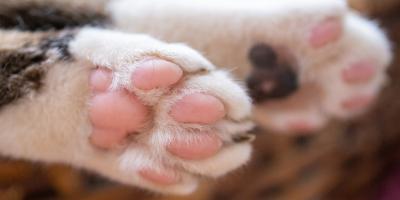Despite the name, ringworm in cats has nothing to do with worms! If you suspect your cat has this fungal skin condition, it’s important that it gets treated as soon as possible to prevent spreading to other animals or even you.
Ringworm in cats is a highly contagious fungal infection of the skin. It is more common in kittens and long-haired cats, but can affect any breed and age. It is also a zoonotic disease meaning cat ringworm can spread to humans, particularly people who are immunocompromised.
Despite the name, feline ringworm is not actually caused by a worm at all, rather a group of fungi called dermatophytes and can be referred to by its medical name dermatophytosis.
Due to the highly contagious nature of the condition, it’s essential to seek treatment for ringworm in cats as soon as possible. If you suspect that your cat is suffering from ringworm, keep reading to find out how to treat ringworm in cats.
What is Ringworm in Cats?
This common skin condition is a fungal infection which feeds on the keratin in a cat’s fur, skin and nails. It’s called ‘ringworm’ because the fungus creates circular ring-like lesions on your cats’ skin, usually also associated with hair loss. Ringworm is often found on the head, ears, along the ridge of the back and on the front legs, but it can be present anywhere on your cat’s body.
How Do Cats Get Ringworm?
Ringworm in cats is highly contagious and is most commonly caught through contact with infected cats. It can spread rapidly in multi-pet households as it gets distributed via fungal spores on skin and hair that’s been shed. Ringworm is very common in kittens under the age of one as their immune systems are still developing. It also affects long-haired cats more, because the fungus gets trapped in the longer coat and is harder to remove.
Symptoms of Ringworm in Cats
Sometimes ringworm in cats can be hard to detect as symptoms may be very mild. The following are some symptoms of ringworm in cats:
- Ring-like lesions on your cat’s skin
- Scaly texture or dandruff in your cat’s coat
- Circular, thickened patches of skin with hair loss
- Sore, red and crusty patches
It’s worth noting that signs can vary depending on your pet and the above signs can also be symptoms of other cat skin conditions. In order to guarantee an accurate diagnosis, you’ll need to take them to a vet.
Diagnosing Ringworm in Cats
To diagnose ringworm in cats, your vet may conduct different tests, such as checking for fluorescence under a special UV lamp, taking a sample of your cat’s fur to analyze under a microscope, or a blood test. However, the most reliable option is to take coat brushing samples from your cat to be sent for laboratory testing. While this option is generally the most accurate, it does take the longest, and you may have to wait up to two weeks for the results.
Ringworm Treatment for Cats
The most common treatment for ringworm in cats is anti-fungal medication paired with an anti-fungal shampoo. Your vet may ask you to restrict your pet to rooms that are easy to clean and prevent them from having free roam of your house.
This is because spores can be quickly spread throughout the home. For long-haired cats, your vet may also suggest that your cat’s coat is clipped in order to tackle the fungus and make it easier to wash them with the anti-fungal shampoo.
Additionally, you’ll need to decontaminate your home to help treat ringworm in cats. The fungal spores present in cat hair or skin will shed into your home and contaminate the environment. Pet hair will need to be removed from any furniture or carpets by vacuuming daily and hard floors will need to be mopped – you can ask your vet about pet-friendly chemical disinfectants that are safe to use. Any of your cat’s equipment such as bedding, brushes and toys which can’t be effectively cleaned and disinfected will need to be thrown away to avoid re-infection.
Spores can live in the environment for many months. Therefore, this part of the treatment for ringworm in cats is essential or you may run the risk of your cat becoming infected again. If you have other pets in the home, ask your vet whether they should also be treated. However, never use medication prescribed for one animal on another pet as this can be very dangerous, particularly if they are different species.
For more expert tips on keeping your cat healthy, explore our other cat health articles.
Related articles

Be Rewarded for Your Purina Purchases
Earn and redeem points for Purina products with myPurina app.








